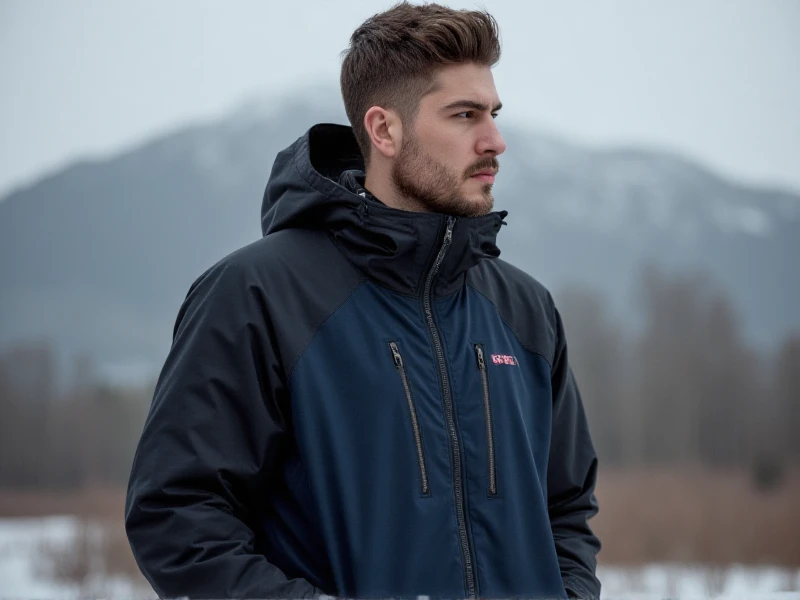The Essential Guide to Choosing the Perfect Men's Outdoor Windbreaker
2025-06-04

When adventure calls, unpredictable weather shouldn't stand in your way. That's where a reliable men's outdoor windbreaker becomes indispensable gear. Far more than just a jacket, it's your shield against the elements – wind, light rain, and unexpected chills – while remaining surprisingly lightweight and packable. Selecting the right one can significantly enhance your hiking, camping, cycling, travel, or even everyday active experiences.
Why a Dedicated Windbreaker Matters
Think your rain jacket does it all? Think again. While waterproof shells excel in downpours, they often sacrifice breathability, leading to uncomfortable sweat buildup during high-output activities. A true men's outdoor windbreaker prioritizes:
1. Wind Protection: This is the core function. Engineered fabrics with a tight weave physically block chilling gusts without adding bulk, preserving your body heat efficiently.
2. Water Resistance (Not Full Waterproofing): Most modern windbreakers use Durable Water Repellent (DWR) coatings. This sheds light rain and morning dew, keeping you dry in drizzle or light showers. For sustained heavy rain, a separate rain jacket remains essential.
3. Superior Breathability: High-airflow fabrics or strategically placed mesh panels allow sweat vapor to escape. This prevents overheating and moisture accumulation inside, crucial for hiking uphill or cycling.
4. Lightweight & Packability: One of the biggest advantages. A good windbreaker compresses down to the size of an apple or fists when stuffed into its own pocket or stuff sack, making it effortless to carry and layer as needed.
5. Layering Compatibility: Its slim profile makes it the ultimate outer layer or mid-layer insulation shield under a heavier jacket in colder conditions.
Key Features to Look For
Navigating the options requires knowing what features align with your needs:
Fabric Technology: Look for trusted names like Gore Windstopper (excellent windproofing and decent breathability), Pertex Quantum (ultralight and packable), or proprietary blends from brands like The North Face or Patagonia. Ripstop nylon offers enhanced durability.
Weight: Ultralight models are fantastic for stuffing into a backpack pocket. Slightly heavier fabrics offer more durability for bushwhacking. Choose based on your activity intensity and terrain.
Hood: A helmet-compatible hood is crucial for climbers, cyclists, and kayakers. Stowable hoods offer versatility. Ensure it’s adjustable for a snug fit.
Pockets: Think about usability. Zippered hand-warmer pockets are standard. Some jackets feature chest pockets (useful for maps/phones) or internal security pockets. Mesh-lined pockets aid ventilation.
Closure: A full-length zipper is standard. Consider water-resistant zips or storm flaps for better protection. Adjustable hem cords and cuffs (hook-and-loop or elastic) seal out wind effectively.
Ventilation: Essential for high-exertion activities. Look for underarm zips (pit zips) or mesh-backed sections.
DWR Coating: Ensure it has a quality water-repellent finish. This needs periodic renewal.
Fit: Should allow easy movement and layering underneath. Consider Athletic (slimmer) or Regular fits depending on your build and layering plans.
Choosing Based on Activity
Hiking / Backpacking: Prioritize ultralight weight, packability, excellent breathability, and a hood. Pit zips are a huge plus. Durability matters, especially for off-trail adventures.
Cycling / Running: Focus on exceptional breathability, wind protection, and a cycling/tailored cut. Bright colors enhance visibility. Minimal bulk is key.
Travel / Casual: Opt for style alongside function. Sleeker cuts, subtle logos, and perhaps fewer technical features (pit zips) make it transition smoothly from trails to towns.
Fishing / Water Sports: Enhanced water resistance beyond basic DWR is beneficial. Look for features specific to the sport (e.g., fly-fishing hand warmer pockets with drainage, longer cut for kayaking).
Essential Care for Longevity
Protecting your investment is simple:
1. Wash Regularly: Dirt degrades DWR and blocks breathable membranes. Use technical detergent (no fabric softeners or bleach). Check the care label.
2. Reapply DWR: When water stops beading on the surface, it’s time. Spray-on or wash-in DWR treatments are readily available.
3. Dry Properly: Hang dry or tumble dry on low heat according to instructions. Heat reactivates most DWR finishes.
4. Store Clean: Don’t stuff it wet; store it loosely hanging or packed in its stuff sack.
Choosing Your Shield Against the Wind
Your perfect men's outdoor windbreaker balances protection, breathability, weight, and features tailored to your chosen pursuits. View it not just as a jacket, but as an essential piece of performance equipment. By understanding the technology and prioritizing the features relevant to your adventures, you'll find the ultimate lightweight layer that keeps the wind out, lets your body breathe, and packs away quickly when that unexpected sun emerges. Invest wisely—it’s your constant companion for breezy peaks, rainy trails, urban commutes, and spontaneous escapades alike.
Ultimate Tips:
Always test layering: Ensure your mid-layers fit comfortably underneath.
Pack it always: Its small size makes carrying it "just in case" a no-brainer.
Look for recycled materials: Leading brands increasingly use recycled nylons/polyesters, offering sustainable choices without compromising performance.
Protection from the elements starts here. Choose your men's outdoor windbreaker and embrace the adventure, whatever the wind brings.
Category: